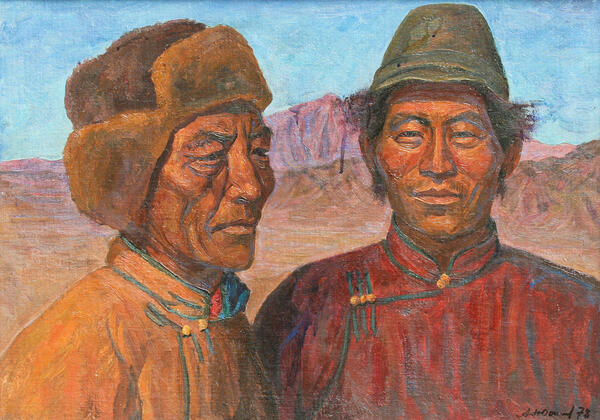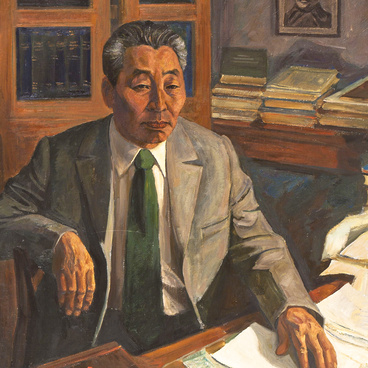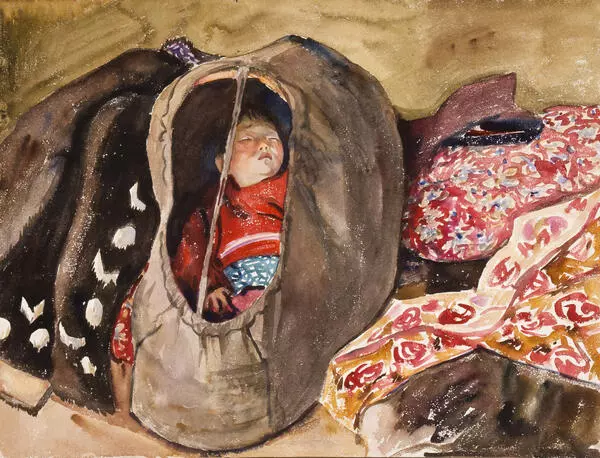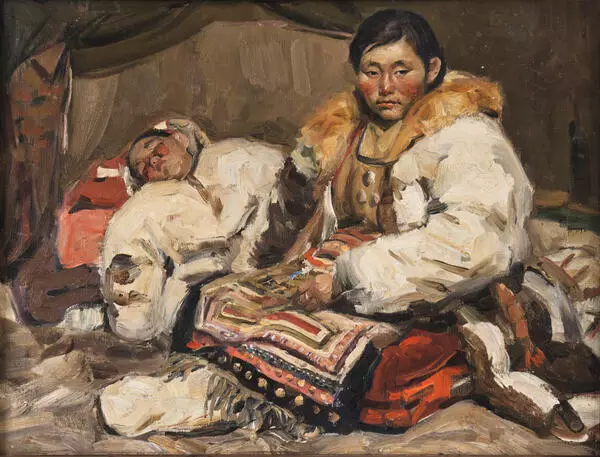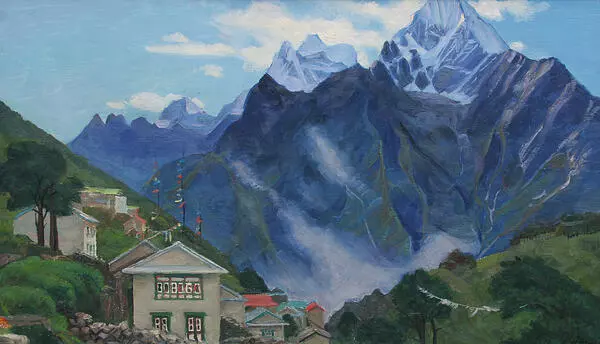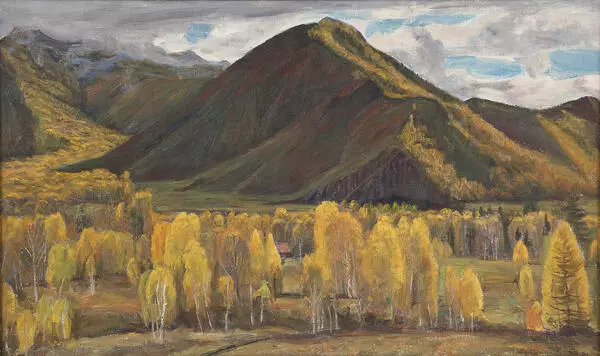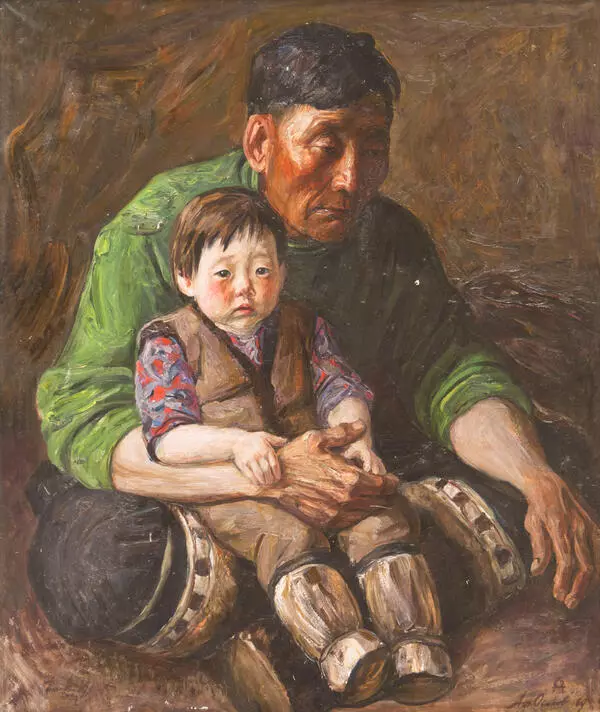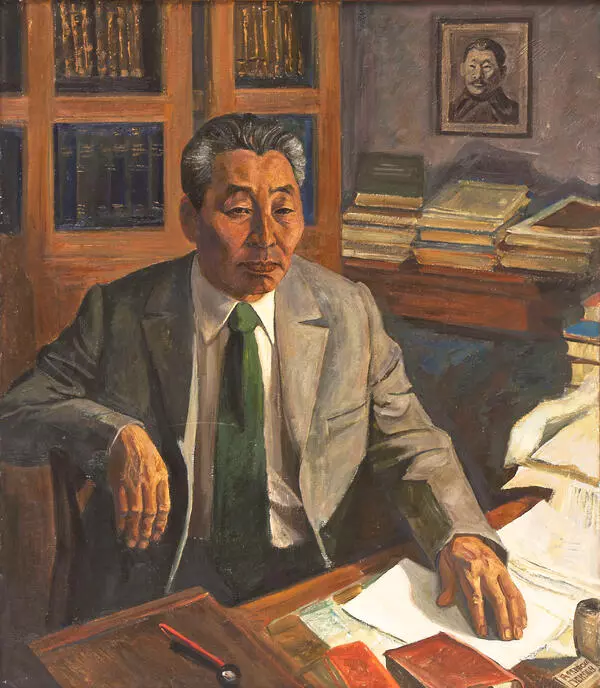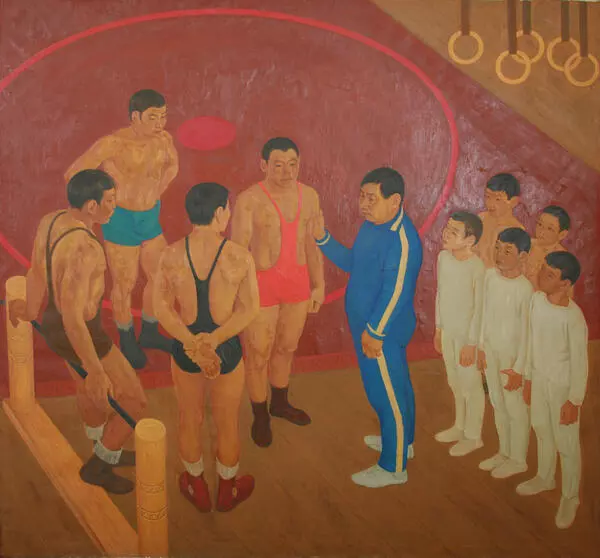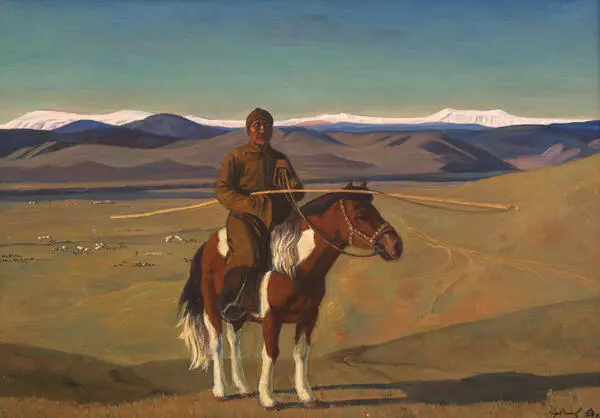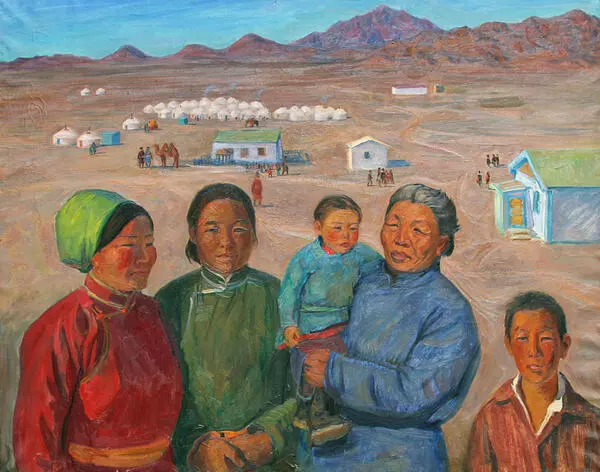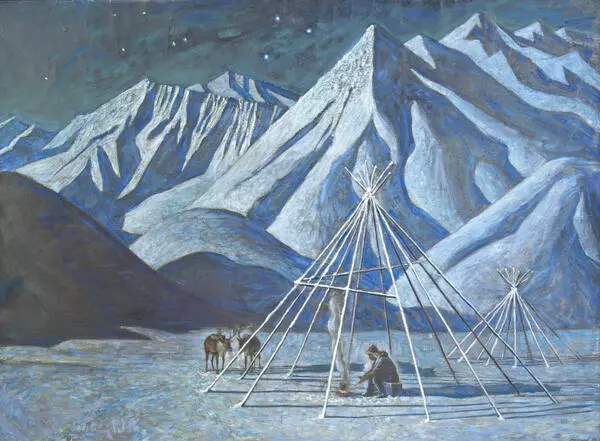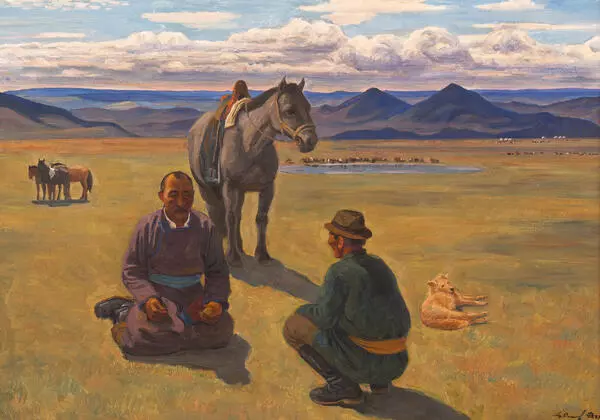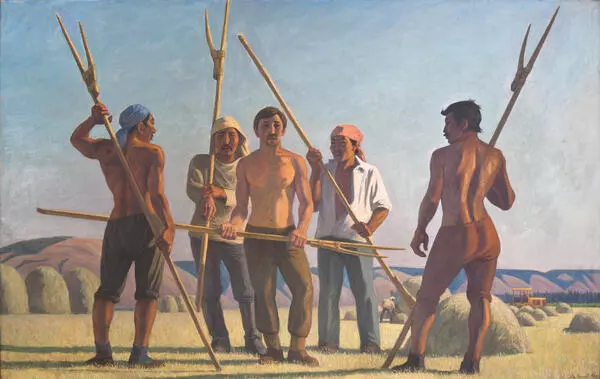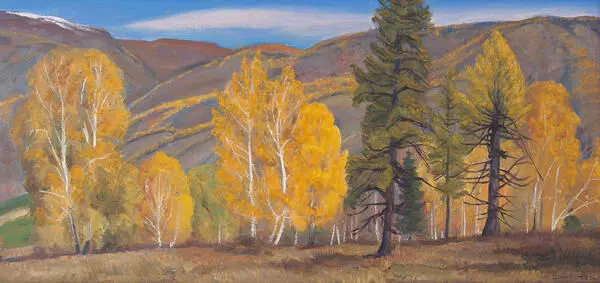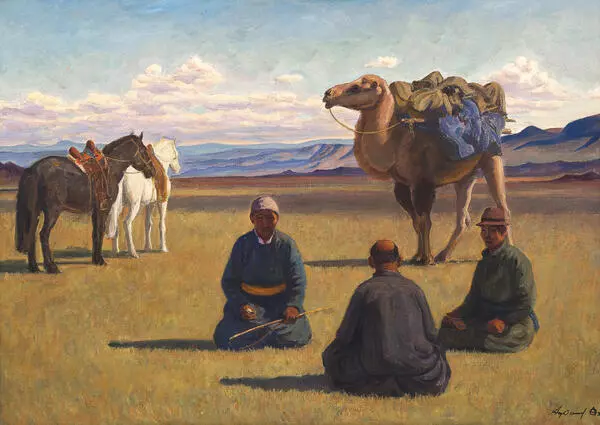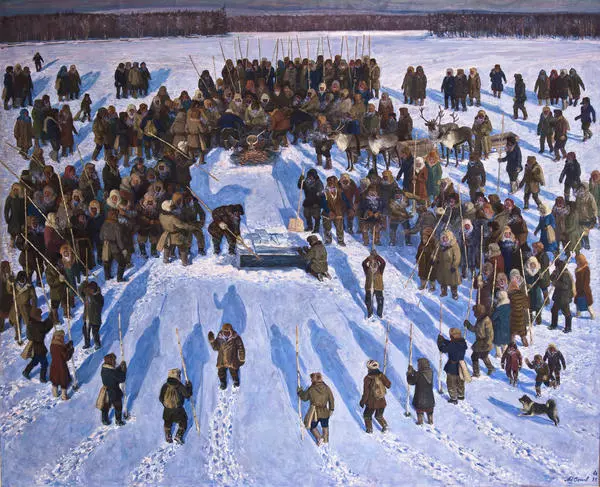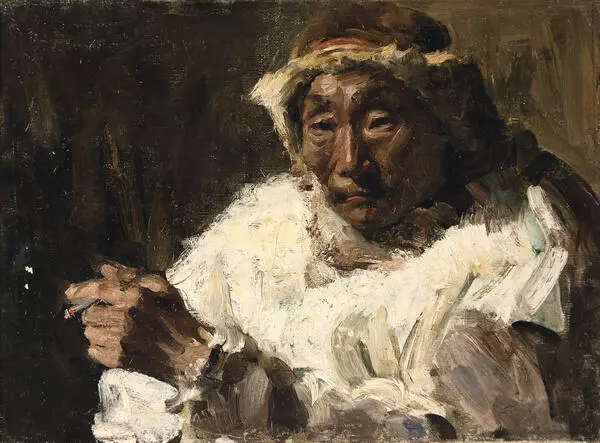Yakut painter Afanasy Osipov was born on February 28, 1928. In his youth, he went to Moscow to study at the Moscow Secondary Art school at the V.I. Surikov Institute, and then entered the institute. Osipov participated in all-union and foreign art exhibitions, became a People’s Artist of the USSR, an academician of the Russian Academy of Arts, and was awarded the I. Repin State Prize of the RSFSR.
Afanasy Osipov first came to Mongolia in autumn of 1977 as part of a Soviet delegation that arrived for the Days of Soviet-Mongolian Friendship. The following autumn, he made a creative trip to the famous Gobi Desert in Southern Mongolia. During the trip, Osipov wrote a series of sketches, genre works, and landscapes. Genre paintings are paintings that depict scenes from everyday life. The artist captured local residents, i.e. the Arats, their homes, and the nature of this region.
A year later, a traveling exhibition of Afanasy Osipov was held in Ulaanbaatar, the capital of Mongolia.
The “Gobi” series was painted in 1987 during a joint trip with Yakut artist Zinaida Kurchatova, Osipov’s wife. Then the master performed many famous paintings. Among them are ‘My Aratian Friends’, ‘Twilight on the Outskirts of Somon’, ‘A Fine Evening in Somon’, ‘Sunset over Somon’, ‘Gobi Song’, and others. The word ‘Arats’ in translation from the Mongolian language is ‘working people’. This is the name of the nomadic people who live in the area of Arkhangai on the territory of modern Mongolia. Their main occupation of Arats is cattle breeding.
In the foreground, the artist depicted two men. On the left is an elderly man in a traditional caftan ‘daegel’ of orange and ochre tone, while next to him is a young Mongol in a red robe. The painter applies confident, but at the same time soft and smooth brush strokes that tightly cover the entire surface of the canvas. The artist paints the tanned faces of the Arats dotted with the desert, and the texture of the fabric on the clothes of those depicted is clearly felt. The overall color space of the canvas is designed in a rich tonal scale. Ochre shades are set off by the cold blue color of the sky.
Afanasy Osipov first came to Mongolia in autumn of 1977 as part of a Soviet delegation that arrived for the Days of Soviet-Mongolian Friendship. The following autumn, he made a creative trip to the famous Gobi Desert in Southern Mongolia. During the trip, Osipov wrote a series of sketches, genre works, and landscapes. Genre paintings are paintings that depict scenes from everyday life. The artist captured local residents, i.e. the Arats, their homes, and the nature of this region.
A year later, a traveling exhibition of Afanasy Osipov was held in Ulaanbaatar, the capital of Mongolia.
The “Gobi” series was painted in 1987 during a joint trip with Yakut artist Zinaida Kurchatova, Osipov’s wife. Then the master performed many famous paintings. Among them are ‘My Aratian Friends’, ‘Twilight on the Outskirts of Somon’, ‘A Fine Evening in Somon’, ‘Sunset over Somon’, ‘Gobi Song’, and others. The word ‘Arats’ in translation from the Mongolian language is ‘working people’. This is the name of the nomadic people who live in the area of Arkhangai on the territory of modern Mongolia. Their main occupation of Arats is cattle breeding.
In the foreground, the artist depicted two men. On the left is an elderly man in a traditional caftan ‘daegel’ of orange and ochre tone, while next to him is a young Mongol in a red robe. The painter applies confident, but at the same time soft and smooth brush strokes that tightly cover the entire surface of the canvas. The artist paints the tanned faces of the Arats dotted with the desert, and the texture of the fabric on the clothes of those depicted is clearly felt. The overall color space of the canvas is designed in a rich tonal scale. Ochre shades are set off by the cold blue color of the sky.

